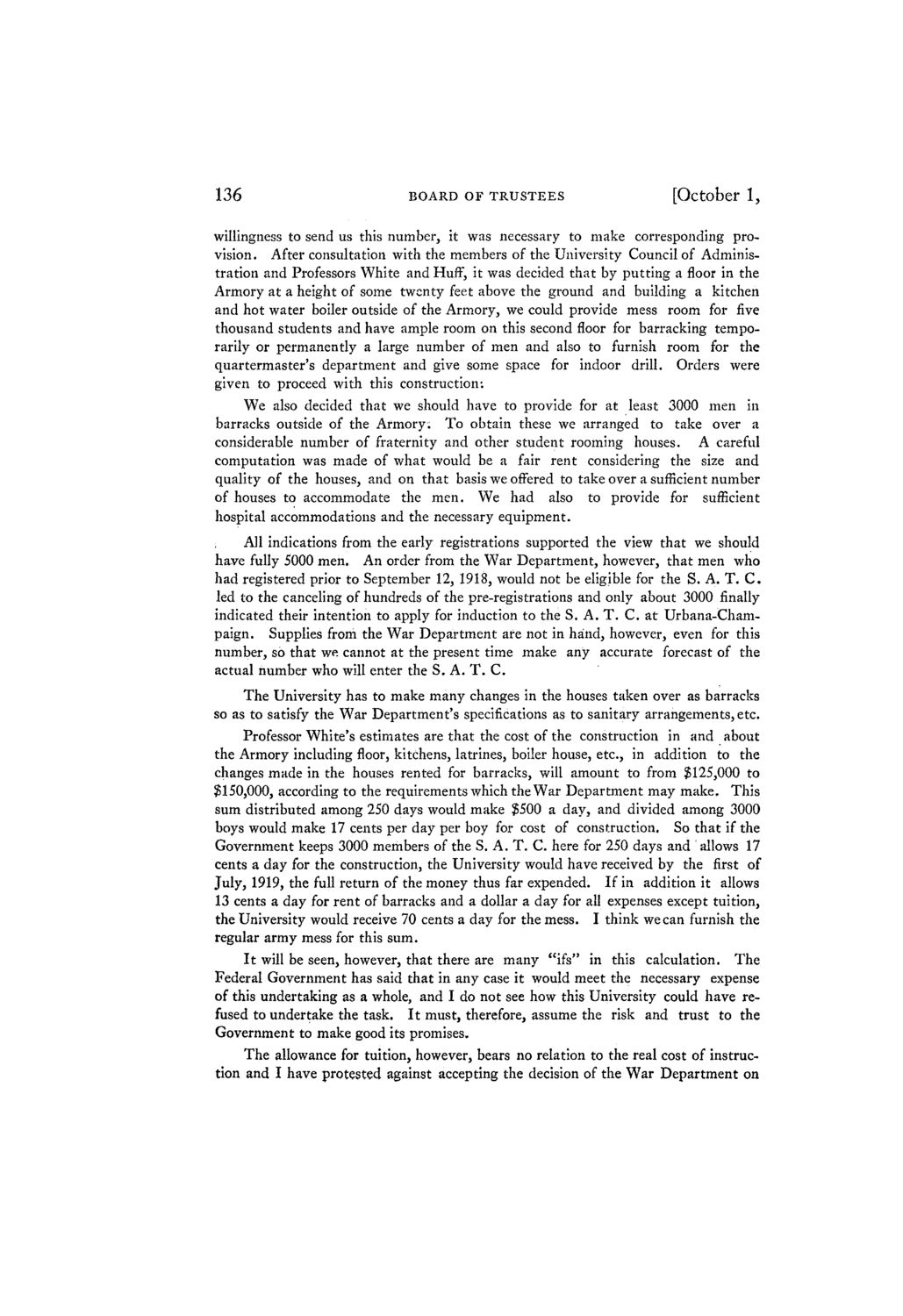| |
| |
Caption: Board of Trustees Minutes - 1920
This is a reduced-resolution page image for fast online browsing.

EXTRACTED TEXT FROM PAGE:
136 BOARD OF T R U S T E E S [October 1, willingness to send us this number, it was necessary to make corresponding provision. After consultation with the members of the University Council of Administration and Professors White and Huff, it was decided that by putting a floor in the Armory at a height of some twenty feet above the ground and building a kitchen and hot water boiler outside of the Armory, we could provide mess room for five thousand students and have ample room on this second floor for barracking temporarily or permanently a large number of men and also to furnish room for the quartermaster's department and give some space for indoor drill. Orders were given to proceed with this construction: We also decided that we should have to provide for at least 3000 men in barracks outside of the Armory. To obtain these we arranged to take over a considerable number of fraternity and other student rooming houses. A careful computation was made of what would be a fair rent considering the size and quality of the houses, and on that basis we offered to take over a sufficient number of houses to accommodate the men. We had also to provide for sufficient hospital accommodations and the necessary equipment. All indications from the early registrations supported the view that we should have fully 5000 men. An order from the War Department, however, that men who had registered prior to September 12, 1918, would not be eligible for the S. A. T. C. led to the canceling of hundreds of the pre-registrations and only about 3000 finally indicated their intention to apply for induction to the S. A. T . C. at Urbana-Champaign. Supplies from the War Department are not in hand, however, even for this number, so that we cannot at the present time make any accurate forecast of the actual number who will enter the S. A. T . C. The University has to make many changes in the houses taken over as barracks so as to satisfy the War Department's specifications as to sanitary arrangements, etc. Professor White's estimates are that the cost of the construction in and about the Armory including floor, kitchens, latrines, boiler house, etc., in addition to the changes made in the houses rented for barracks, will amount to from $125,000 to $150,000, according to the requirements which the War Department may make. This sum distributed among 250 days would make $500 a day, and divided among 3000 boys would make 17 cents per day per boy for cost of construction. So that if the Government keeps 3000 members of the S. A. T. C. here for 250 days and ' allows 17 cents a day for the construction, the University would have received by the first of July, 1919, the full return of the money thus far expended. If in addition it allows 13 cents a day for rent of barracks and a dollar a day for all expenses except tuition, the University would receive 70 cents a day for the mess. I think we can furnish the regular army mess for this sum. It will be seen, however, that there are many "ifs" in this calculation. The Federal Government has said that in any case it would meet the necessary expense of this undertaking as a whole, and I do not see how this University could have refused to undertake the task. I t must, therefore, assume the risk and trust to the Government to make good its promises. The allowance for tuition, however, bears no relation to the real cost of instruction and I have protested against accepting the decision of the War Department on
| |